Surviving a dynamite blast, vandalism, and coats of paint, Columbia University’s Alma Mater statue has watched over the bustling Manhattan campus for more than a century. A small owl hides within her robes.

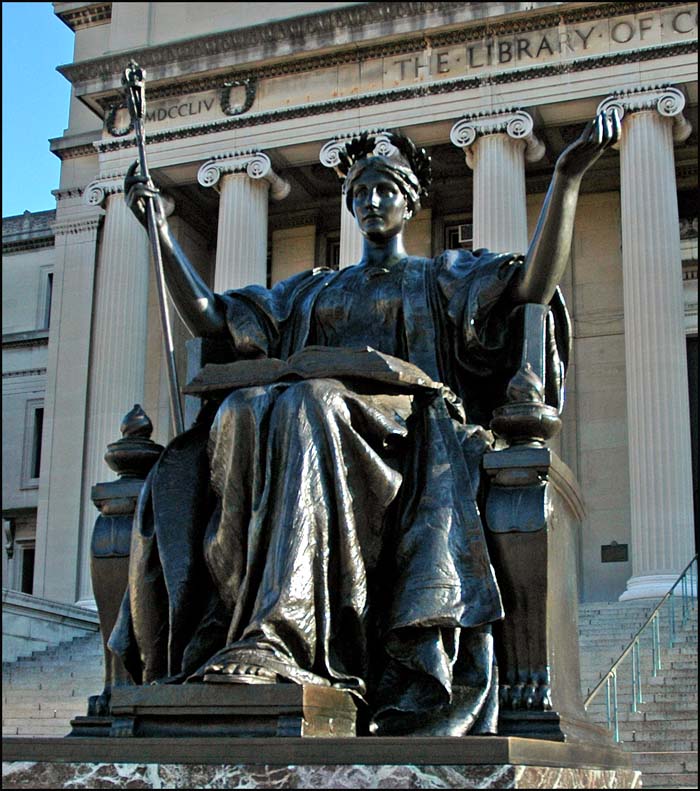
In 1899, New York businessman Robert Goelet, Columbia Class of 1860, died unexpectedly of heart failure during a trip to Italy. His grieving wife Harriette offered to fund a statue in his memory, and the University commissioned sculptor Daniel Chester French to create the work. Alma Mater was unveiled in 1903.
The four-ton bronze statue stands on the steps leading to the Low Memorial Library. A book sits on Alma Mater’s lap, and she holds a scepter of sheaves of wheat topped by a crown, a reference to the University’s founding as King’s College in 1754.
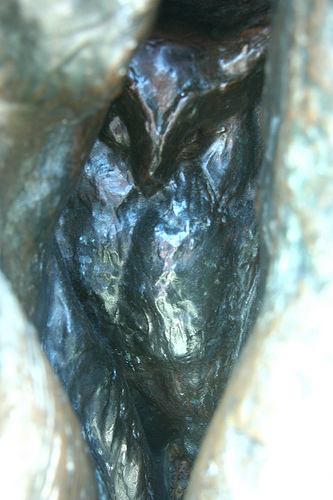
A small owl, invisible to all but those who scale the five-foot base, hides within the folds of her gown.
Its meaning appears obvious: owls are traditional symbols of knowledge and learning. Other theories have surfaced over the years, however.
In 1953, a Columbia history professor speculated that the owl was a reference to the mascot of the Psi Upsilon fraternity, of which Daniel Chester French was a member. Others believed that the the statue represented the Greek goddess Athena (or her Roman counterpart Minerva) who is traditionally accompanied by an owl.1
French’s daughter Margaret French Cresson rejected these suggestions.
“The statue does not represent Pallas Athena, the Greek goddess,” she wrote. “It portrays simply the Alma Mater of Columbia University, the human and beautiful symbol of the Mother of Men. As for the little owl only partially visible in the folds of her college gown, this ‘item of mystery’ represents no fraternity and poses no labyrinthine riddle. The owl is the age-old symbol of wisdom and was used by the sculptor to convey that interpretation. Possibly he was hoping that in pursuit of knowledge youth might indeed find wisdom.” 2
Alma Mater has undergone a series of cosmetic makeovers during the past century. Her original wash of bright gold leaf was reapplied in 1928, then removed in 1950.
President Dwight D. Eisenhower in 1953.
A 1962 coating of bronze-colored paint was a bad idea, and the thick layer was stripped four weeks later.3
Alma Mater was a gathering place for student protesters in the 1960s. In 1968, students swarmed around her to denounce the Vietnam War, including Columbia’s involvement with a Defense Department think tank called the Institute for Defense Analyses, and the proposed construction of a gym in Morningside Park.
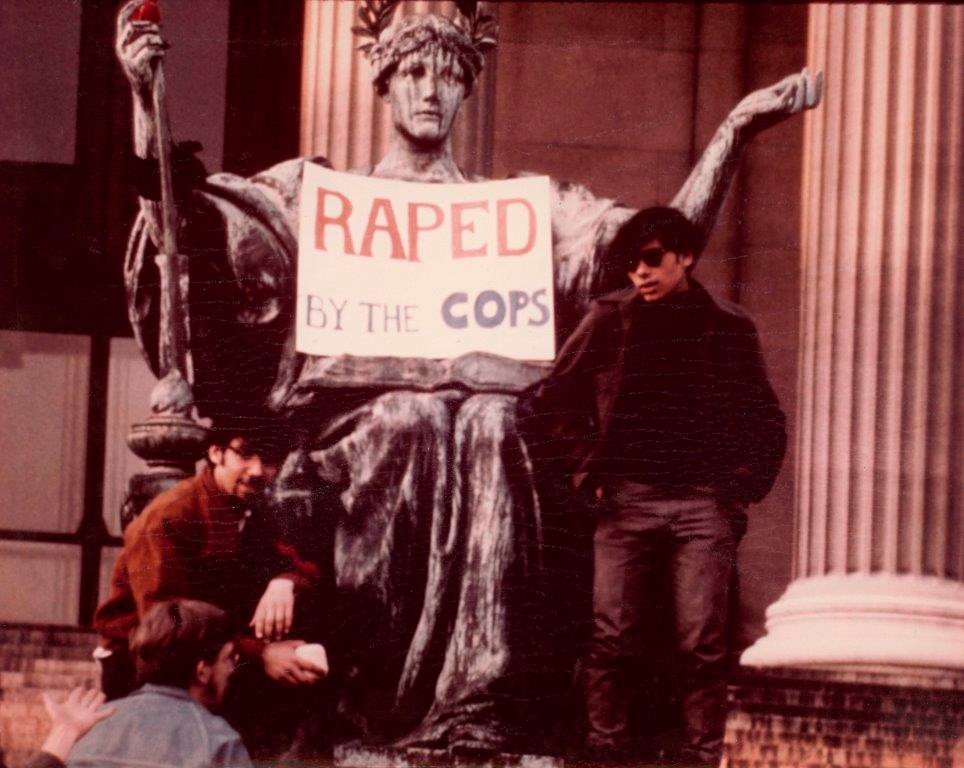 Source: Columbia Archives (undated photo)
Source: Columbia Archives (undated photo)
In the pre-dawn hours of May 14, 1970, students protesting the entry of U.S. troops into Cambodia and the shooting at Kent State detonated three sticks of dynamite at her base.
Although part of her chair was demolished, the statue wasn’t repaired until 1978. It was a turbulent decade for Columbia.
Returning to campus after 1978 repair.
Unsurprisingly for a statue on a college campus, Alma Mater also endured some vandalism. Her crown disappeared at least twice; after its theft in 1984 it was found in a campus restroom. Her entire scepter vanished for two months later that year, only to reappear, covered in rival Cornell University football pennants, on the doorstep of a dean’s office in Ithaca.4
Past college superstition decreed that the first member of each freshman class to find the owl would become class valedictorian. Some students still rub it for good luck on exams.
But today the owl serves mainly as a winsome reward for students who take the time to scale Alma Mater’s stone pedestal and look for the raptor within her robes.
Source: UntappedCities.com
Alma Mater
Artist: Daniel Chester French (1850-1931)
Daniel Chester French was the leading American monumental sculptor of the early twentieth century. His dozens of public statues include The Minute Man (dedicated in 1875), in Concord, Massachusetts, commemorating the Battle of Concord, and his best known work, the immense sculpture of a seated Abraham Lincoln (1920) inside the Lincoln Memorial.
Date: 1903
Medium: bronze
Size: 2.6 m. × 1.8 m. × 1.9 m. (8.6 ft. × 5.9 ft. × 6.2 ft.)
Location: Morningside Heights Campus, Columbia University, New York
Online Information:
“Alma Mater: In the 20th Century.” Columbia University Archives.
“Alma Mater: Lore and Pranks.” Columbia University Archives.
“Alma Mater of Columbia is 50 Today.” New York Times, September 23, 1953.
“Columbia’s Alma Mater Robbed of Crown; Under Canvas Cover She Awaits Its Return.” New York Times, August 8, 1928.
“A Guided Tour of Columbia’s Ivy Halls.” New York Times, May 18, 1997.
“The Lady on the Pedestal.” New York Times, November 14, 1978.
“File:Almamater.jpg” by Nowhereman86 is licensed under CC BY 3.0
- Alma Mater of Columbia is 50 Today.” New York Times, September 23, 1953.
- https://timesmachine.nytimes.com/timesmachine/1953/11/06/84070881.html?pageNumber=26
- https://www.college.columbia.edu/cct/issue/winter17/article/did-you-know-alma-mater-used-be-gold
- Alma Mater: Lore and Pranks.”
 SECRET IMAGES
SECRET IMAGES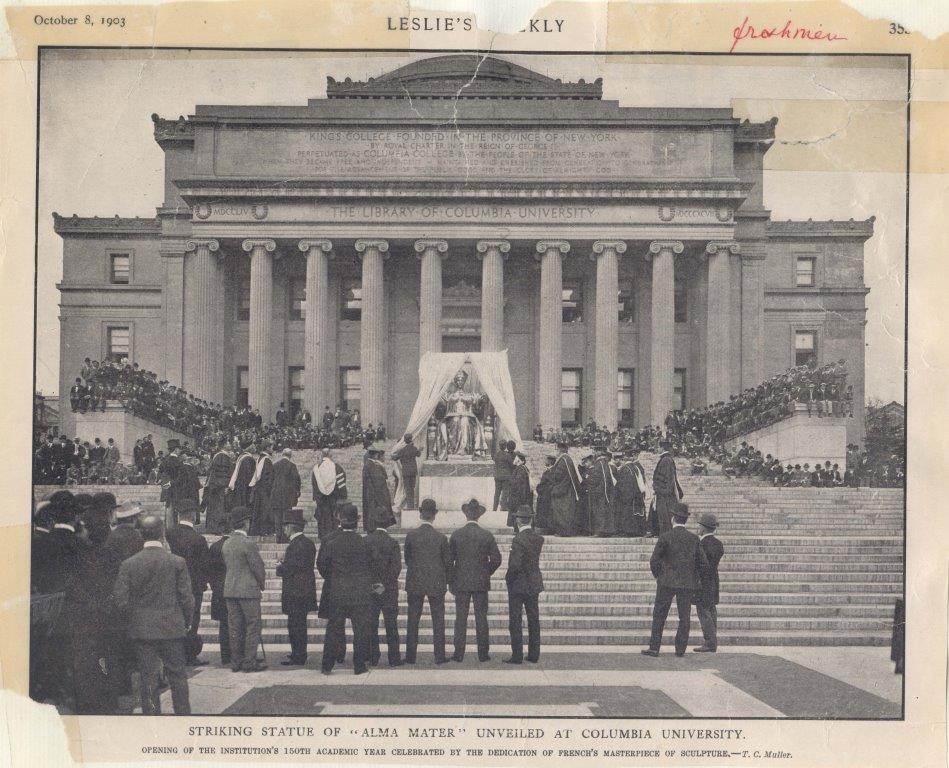
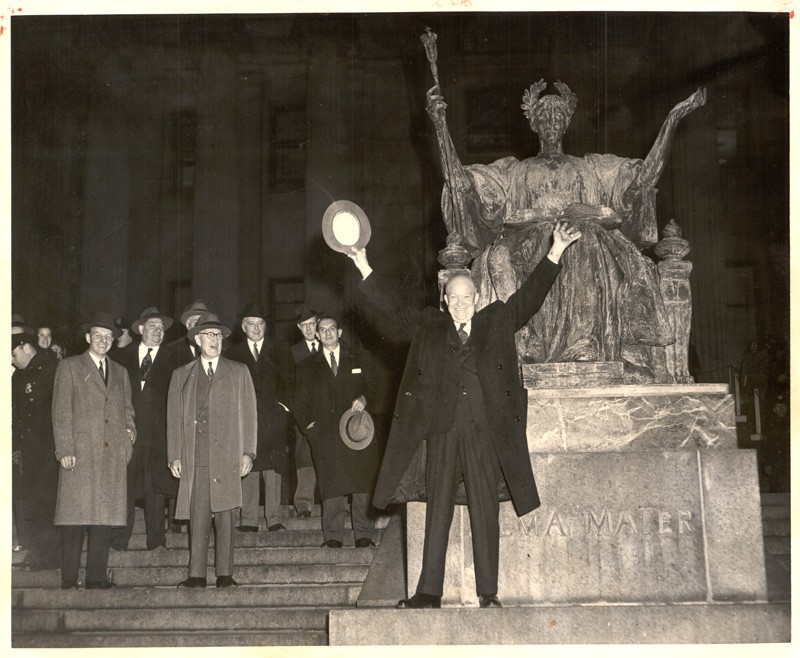
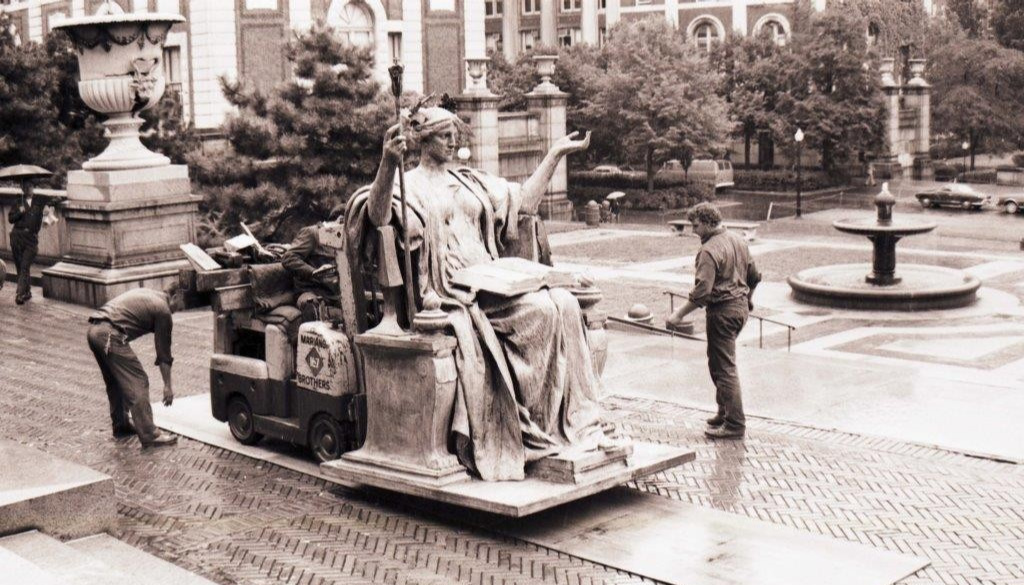
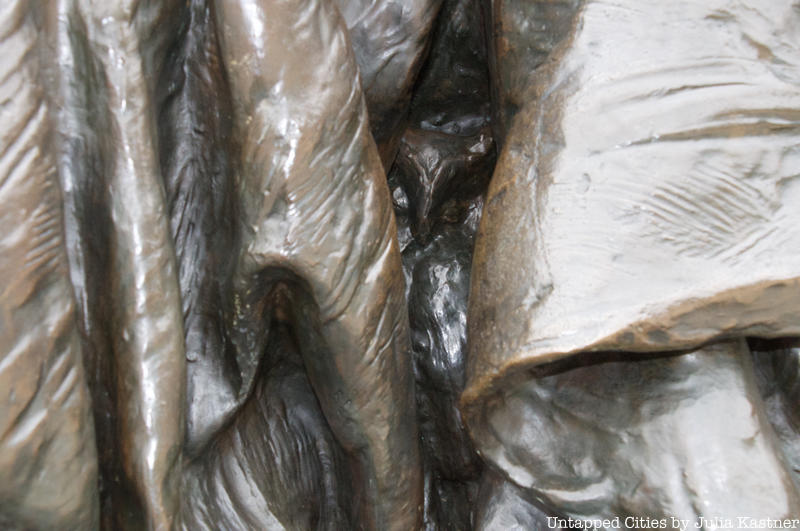
Leave a Reply